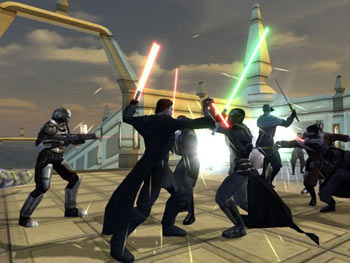It’s nobody’s favorite time again, time to be anal retentive about game design! This column is usually filled with great games that messed up in a few spots. Today’s entry is different because two of the three games are barely tolerable.
 |
|
Hell hounds? More like heck hounds! |
Heroes of Might and Magic 3: Lack of Interesting Conflict — Heroes 3 has the same problem War Craft 2 had. You either win a tremendous victory, or get your ass completely destroyed. There is very little middle ground in the game and even fewer turn arounds. While it may be just because I suck at the game, I never start a game losing and then slowly make a come from behind victory. I build a massive force and crush the enemy quickly, get devastated, or slowly lose more and more ground with each battle. → Tony Hawk’s Posting Ground



